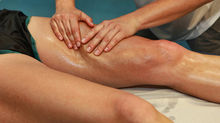Early Postpartum Abdominal Rehabilitation
- The Studio Team
- Apr 2
- 3 min read
Updated: Apr 14
Hayley Sheather
The role of early assessment and early intervention for diastasis recti abdominis (abdominal separation), we now strongly recommend you consider attending an early postpartum abdominal wall assessment at 2 to 3 weeks postpartum, particularly if you (or any of your care providers) have any concerns related to diastasis recti (1, 2, 3).
During the first 6 – 8 weeks postpartum uterus involution (the shrinking of the uterus back to its pre-pregnancy size) and laydown of collagen fibres (causing hardening of the linea alba – the connective tissue down your midline) is a naturally occurring process. Additional physical support, such as binders and compression garments may provide extra support during this crucial timeframe for recovery (3, 4, 5, 6). Furthermore, an individualised early postpartum rehabilitation program with a focus on rectus abdominis (trunk flexor) strength has been demonstrated to be effective in reducing the inter-recti distance (gap between your rectus abdominis or 6-pack muscles) (3, 4, 5, 6).
At The Studio, an early postpartum abdominal wall assessment involves one of our Women’s Health Physiotherapists taking a thorough history to gain information about your pregnancy (if you are not known to us from pregnancy already), your birth, your current bladder and bowel function and your goals (including return to exercise). Physical assessment will then be individualised according to your specific circumstances but may include:
Abdominal wall assessment:
Observation in standing and supine (lying) positions
Palpation of your abdominal wall
Use of the Real Time Ultrasound (RTUS) to measure your inter-recti distance at rest and on curl up to determine if you have a true diastasis recti abdominis
Pelvic floor screen:
Use of the RTUS to measure pre and post void residuals (bladder volumes) to assess your bladder filling and emptying ability
Use of the RTUS to screen for pelvic floor contraction and relaxation ability (as a non-invasive early option to gain information on pelvic floor function)
If deemed necessary, and with your consent; an external visual assessment of the perineum to assess scar/episiotomy healing, tissue integrity and/or urethral concerns
Caesarean scar assessment:
Observation of Caesarean wound healing
Following completion of your assessment, our Women’s Health Physiotherapist will then provide you with specific recommendations on compression garments and exercise for the early postpartum period (up to 6 weeks). This may involve a home-based program and/or clearance for an early return to small group physiotherapy-led clinical Mums and Bubs classes. We still recommend you return for a vaginal examination (regardless of mode of delivery) to assess more thoroughly pelvic floor function, prolapse (or risk of), muscle tone and/or pain concerns once lochia (postpartum bleeding) has ceased, which is usually around 6 weeks postpartum.
We recognise that early postpartum comes with its own physical and emotional challenges as you navigate life with a new baby, often on minimal sleep. We understand it is not easy to leave the house solo with time revolving around feeding, changing and settling a newborn. We therefore encourage you (if able) to bring along a support person to this early postpartum physiotherapy assessment, or alternatively rest assured our staff can assist with caring for bub during your appointment.
References
1. Starzec-Proserpio M, Lipa D, Szymański J, Szymańska A, Kajdy A, Baranowska B. Association Among Pelvic Girdle Pain, Diastasis Recti Abdominis, Pubic Symphysis Width, and Pain Catastrophizing: A Matched Case-Control Study. Phys Ther. 2022;102(4).
2. Gluppe SB, Ellström Engh M, Bø K. Curl-up exercises improve abdominal muscle strength without worsening inter-recti distance in women with diastasis recti abdominis postpartum: a randomised controlled trial. J Physiother. 2023;69(3):160-7.
3. Keshwani N, Mathur S, McLean L. The impact of exercise therapy and abdominal binding in the management of diastasis recti abdominis in the early post-partum period: a pilot randomized controlled trial. Physiother Theory Pract. 2021;37(9):1018-33.
4. Abdullah, Rehman KA, Ahmad B, Arshad MK, Saeed H, Keen MA, et al. Comparative Efficacy of Abdominal Exercises and Abdominal Binding on Diastasis Recti Abdominis Reduction in Postpartum Women: A Systematic Review and Meta-Analysis of Randomized Controlled Trials. Physiother Res Int. 2025;30(2):e70038.
5. Depledge J, McNair P, Ellis R. Exercises, Tubigrip and taping: can they reduce rectus abdominis diastasis measured three weeks post partum? Musculoskelet Sci Pract. 2021;53:102381.
6. Kaya AK, Menek MY. Comparison of the efficiency of core stabilization exercises and abdominal corset in the treatment of postpartum diastasis recti abdominis. Eur J Obstet Gynecol Reprod Biol. 2023;285:24-30.

































Comments